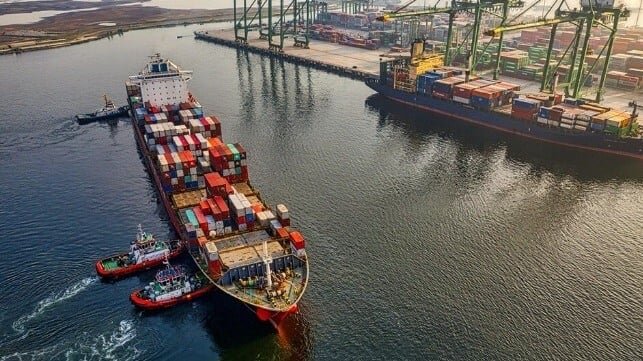The maritime industry is facing new challenges with the expansion of the European Union Emissions Trading System (EU ETS) to include shipowners. This move has introduced financial and operational hurdles for all shipowners voyaging to or through EU ports, as they are now required to purchase European Union Allowances regardless of their ship’s nationality.
European Union Allowances are market-driven instruments that must be purchased through regulated carbon exchanges. The prices of these allowances fluctuate like other securities and have been highly volatile since their inception. Market analysts predict that prices will increase dramatically over the next five years.
Shipowners have a deadline of September 2025 to comply with this new obligation, which means they have just 6 months to calculate and purchase the required allowances to cover their 2024 emissions to avoid penalties.
This article features insights and trends from Frederic Bouthillier, Head of Shipping at Vertis Environmental Finance (STX), one of the largest ETS traders and market makers.
Bouthillier emphasizes the importance of having a structured approach to allowance purchasing, exploring alternative fuels, and implementing technological solutions like Cyanergy’s real-time emissions monitoring system. This system helps ensure compliance while maintaining a competitive edge in an increasingly regulated market.
Impact of EU Emissions Trading System on Shipowners: Rising and Fluctuating Prices
The EU ETS aims to drive carbon prices higher over time, making compliance a growing financial burden for shipowners. Bouthillier warns that prices could exceed €100 in the next 2-3 years, as the structural pricing mechanism is designed for continual increases.
Price fluctuations add complexity to cost management, with European Union Allowances prices gaining 15% in January before retracing downward in February. These fluctuations make cost forecasting challenging for shipowners and require quick adaptation to avoid excessive financial exposure.
Companies that underreport emissions risk fines of €100 per missing metric ton and must purchase shortfall allowances at market rates. Non-compliance can lead to regulatory investigations, public disclosure of violations, and suspension from the ETS.
Accuracy Is Critical: The Role of Technology
Accurate emissions reporting is essential for shipowners to comply with the EU ETS and manage costs effectively. Errors in reporting can have costly consequences, as allowances must be verified by independent auditors.
Precise emissions monitoring goes beyond CO2, as other greenhouse gases like N2O and CH4 have higher emissions factors. Bouthillier emphasizes the importance of monitoring emissions by volume and type accurately to avoid financial penalties.
Cyanergy’s CE² Monitor collects engine and gas data every minute for more accurate measuring and reporting. Courtesy of Cyanergy.
A Strong Incentive to Seek Competitive Solutions
With rising costs and regulatory risks, shipowners must optimize their emissions strategy to stay competitive. Bouthillier warns that failing to adapt puts companies at risk of falling behind competitors managing compliance proactively.
Shipping companies leveraging technology for real-time emissions monitoring can gain a competitive edge by making informed decisions on ETS allowances purchasing and fuel consumption optimization.
The Importance of Real-Time Emissions Monitoring
Proactive emissions management is crucial in a volatile market. Bouthillier stresses the importance of being proactive and using solutions like Cyanergy to mitigate financial risks compared to waiting until the last minute for compliance.
Real-time emissions monitoring solutions, like those offered by Cyanergy, provide shipowners with accurate data to navigate the complexities of the EU ETS. Investing in advanced emissions monitoring technology is now a necessity to secure compliance and minimize costs.
Navigating EU ETS with Smart Solutions
Real-time emissions monitoring systems empower shipping companies with accurate data to optimize allowance purchasing, avoid penalties, and stay ahead of rising carbon costs. By investing in advanced monitoring solutions and proactive compliance strategies, shipowners can mitigate financial risks and strengthen their position in a regulated industry.
This article is sponsored by Cyanergy, providing cutting-edge solutions for emissions monitoring and compliance. Learn more about their innovative technology here.
The opinions expressed herein are the author’s and not necessarily those of The Maritime Executive.

